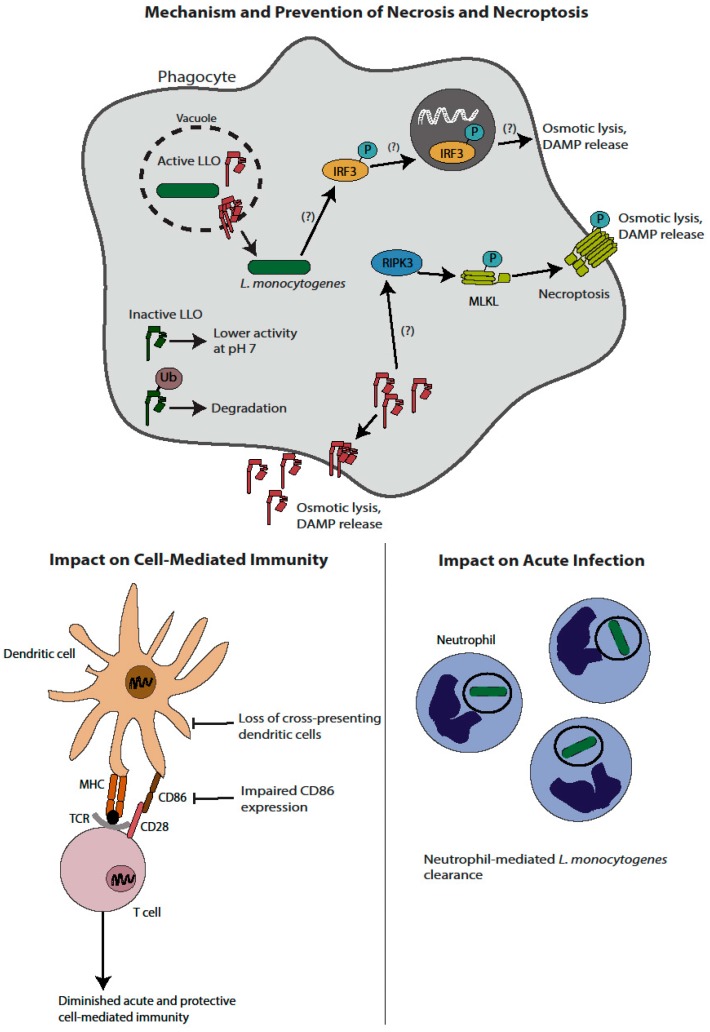Figure 1.
Induction of necrosis by L. monocytogenes and implications on immunity and virulence. LLO can induce traditional necrosis; as such, L. monocytogenes has evolved mechanisms to avoid lytic activity of LLO outside the vacuole, including an acidic pH optimum and ubiquitin-mediated degradation. Strains of L. monocytogenes-induced to express active LLO in the cytosol lead to membrane pore formation and osmotic lysis. In addition, L. monocytogenes induces programmed necrosis. Multiple proposed pathways exist, including a RIPK3-mediated pathway leading to pore formation by MLKL and an IRF3 dependent pathway that occurs by a yet undefined mechanism. Induction of necrosis ultimately leads to a host-protective neutrophil-mediated clearance of L. monocytogenes and an impaired cell-mediated immune response. Impaired immunity is at least in part mediated by diminished numbers of cross-presenting dendritic cells, as well as lower CD86 expression.

